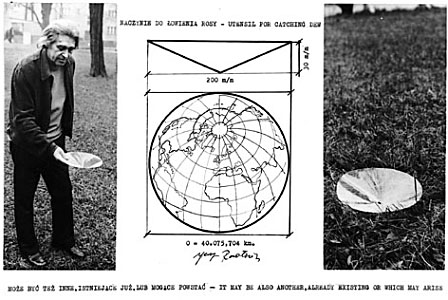Jerzy Rosołowicz was a visual artist connected with the Wrocław scene. In 1972 he joined the NET project, initiated by Jarosław Kozłowski and Andrzej Kostołowski with the aim of an exchange of correspondence among artists from all over the world.
He wrote that the task of his art was to examine “the conflicts and contradictions accompanying the conscious, intentional action of the person. The point is the good will to soothe and steer them so that optimal values are obtained as a result, successful in both individual and societal aspects.” This model was supposed to extend to “all of humanity, regardless of political or religious beliefs, national or racial affiliation.” This utopian ideal was addressed first to artistic and scientific circles, to whom the author assigned a leading role: communities of urban planners, architects, visual artists, musicians, sociologists, electronic engineers, physicists, and cyberneticists (see: postartistic times, cross-pollination). Rosołowicz stressed the weight and significance of “media of information and message.” In the later phase of his work, the artist proposed utopian machines for provoking the imagination, resembling scientific instruments, such as Kreatorium kolumny stalagnatowej – Millennium (Creatorium of the Millennium Stalagmatic Column) (1970), a device in which the dripping of water saturated with calcium carbonate would, over the course of a thousand years, create a column one meter high, and Naczynia do łapania rosy (Dew Collector) (1974), which is presented at the exhibition. As described by Jerzy Ludwiński, this stage of Rosołowicz’s creative work “leads to a situation in which everything disappears and art itself should blend with the world around and cease to exist.”

